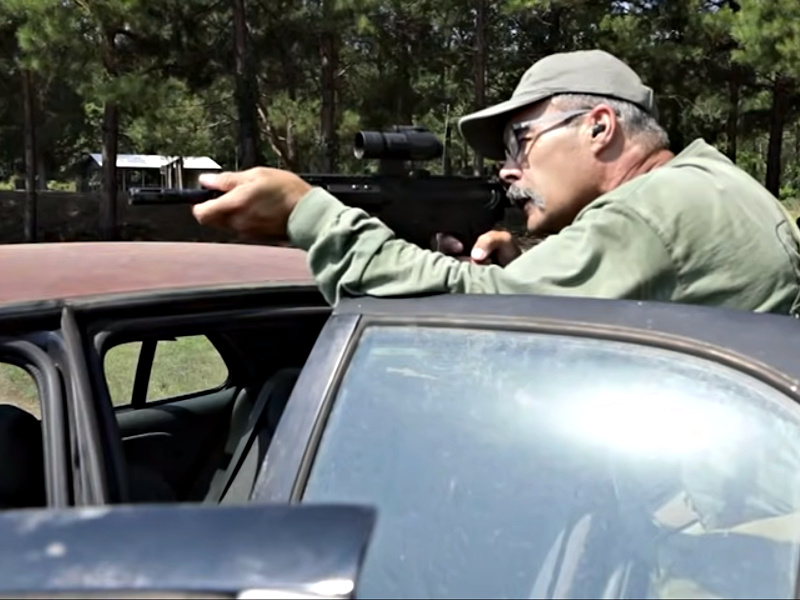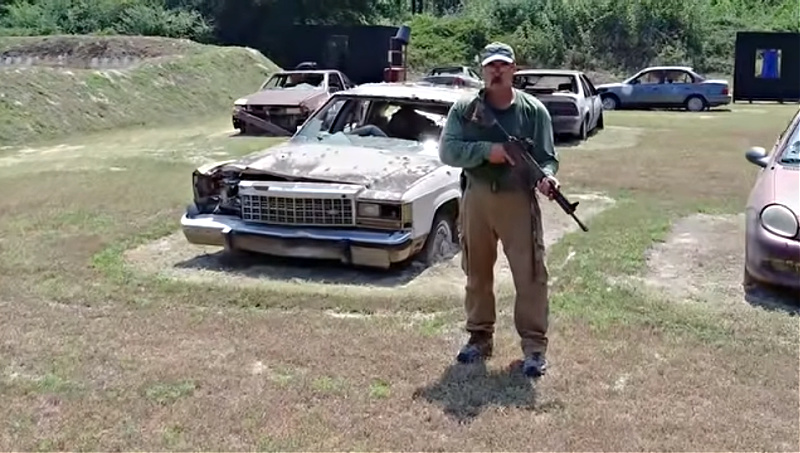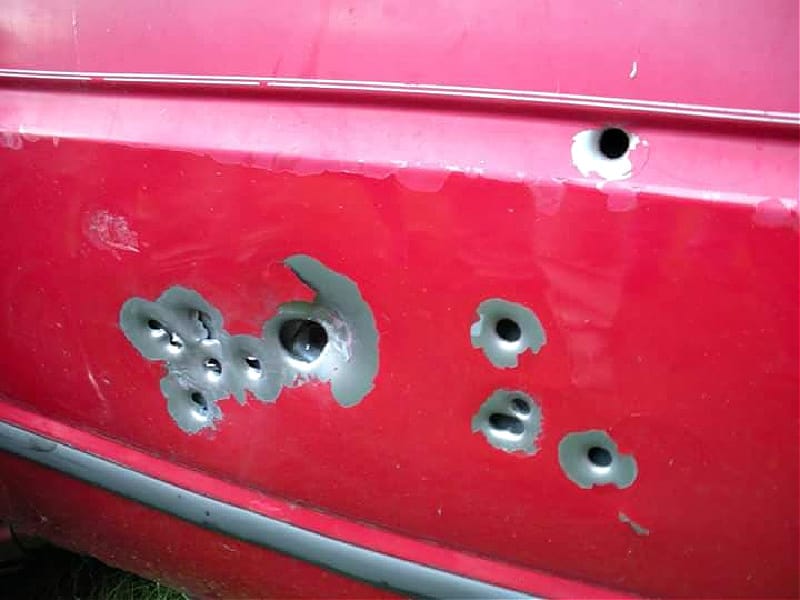Paul Howe has an extensive background in the military, having served in Special Forces Operational Detatchment — Delta, the famed “Delta Force.” He served in Mogadishu during a certain incident that was made famous and made into a movie. Today, we follow Paul as he walks us through the procedures for un-assing a vehicle and exfiltrating the area without getting ventilated.

The Scenario
In this particular video, Paul keeps it simple, discussing a frontal attack on a vehicle under the premise that the vehicle is trapped and cannot “drive off the X.”
Paul mentions that the pistol can engage hostile targets out to around 100 yards, especially the 9mm, which shoots very flat. As long as shooters train at that distance, they can put rounds into bad guys realistically. If you’ve never shot a handgun at 100 yards, give it a try, you’ll be surprised at what you are capable of.

In this scenario, Paul bails out of the vehicle once he figures out that he can’t move the vehicle and fights to his rifle, which is in the back seat. Upon opening the door, he exits the vehicle keeping the door open as soft cover and concealment. He fires three rounds from his pistol before declaring that there are either too many bad guys, or they scattered (he narrates as he goes through the scenario). At that point he makes the decision to go to the larger weapon system in the back seat.

Paul moves to the second door, opens it, and accesses his AR platform, which extends his range and lethality. After engaging hostiles, he keeps his head on a swivel to keep scanning for bad guys (they like to sneak up on our flanks). Paul notes that, once the first shot is fired, it’s a moving battlefield. He also expounds that each model of car door has a different angle from which we can fight.


I’ll jump in here for a moment and note that, during one Vehicle Tactics class I participated in, I learned that not all car doors are created equally. We were using an early model Nissan Sentra and discovered that the car door stopped an astonishing range of bullets. Everything from 9mm up through .308! We could not believe what we were seeing when the door stopped several rounds of .308, it was as if the door were armor plated! Had someone told me this story, I’d have called them a liar, not being able to believe that a small car door like that would be able to stop such a rifle round. Looking back, I can still scarcely believe it happened.

Cars have tons of angles, including the front and rear doors, the seats, and the openings presented when the doors are opened. Try it some time, open your car doors and imagine yourself fighting from the front, the sides, and every angle possible. War Game it in your mind. Understand, your neighbors will probably look at you as if you’ve lost your sanity, but oh well. They’ll get over it. Or not.
Train for Consistency
When Paul gets his long gun out, he does the same thing every time, which includes:
1. Throwing his Go Bag (with pistol ammo and bandages in it) on his side with the strap going across his shoulder first.
2. Then accessing the rifle, which he keeps unloaded.
3. He uses a red dot and states that he likes to keep the dot on because it saves time.

He goes through the same sequence every time to keep continuity and save time. Practice, repetition, and getting the little micro-techniques down pat is what will shave time off. Why does he put the bag on first? He says that it’s awkward if he grabs the rifle first because then he has the bag in his hand and he’s juggling items. So he gets the bag secured first, than grabs the rifle. Beyond that, he wants his rifle sling over top of the shoulder strap for his Go Bag so he’s not competing for space.
More Considerations
Talking about optics, Paul says they have to have a good zero and be able to hold their zero. Operating around vehicles does tend to bring on bumps and dings with weapons and optics, so durability is a consideration. Going house to vehicle, vehicle to house, day after day, an optic can take a beating. All gear has to be set up consistently each time, time after time, so that we can set it up quickly under stress.
The Rule of Seven P’s applies here:
- Proper
- Previous
- Planning
- Prevents
- Piss
- Poor
- Performance
Some things that I learned in Vehicle Tactics are that it’s very important to communicate with other team members. Let your partner(s) know when you’re moving, when you’re changing magazines, where the contact with hostiles is coming from. (“CONTACT FRONT! Moving! Changing!”) If you are shooting from inside of a vehicle, the noise is absolutely dazzling.

Don’t shoot from over the top of a vehicle; rather, get low and shoot around corners. For example, never shoot over the hood or the roof. Get low and shoot from around the front of the vehicle or the rear. And don’t crowd the vehicle, stay back a few feet so that you can remain mobile. We see many people using the vehicle as a shooting rest, which limits our movement and encourages us to shoot over the top, which makes a convenient target for the bad people who are trying to carve a valley in our forehead. Bullets tend to skip and deflect when they hit the skin of vehicles, so ricochets are the order of the day, which is why staying back a couple of feet might be advantageous. Also, if you’re back a few feet, you can work the angles better as opposed to touching the vehicle.
Cars tend to be bullet magnets, considering that they’re huge targets. If your vehicle is disabled or boxed in and cannot be moved, consider moving away from it to better cover. Remember to MOVE!
- Motionless
- Operators
- Ventilate
- Easily
This entire video is less than four minutes long and yet is packed with good basic information about exfiltrating vehicles under fire. Paul Howe has an extreme amount of experience and gives solid tactical advice. He’s well spoken and explains things in simple terms that are easy for anyone to understand. As a result, this video comes highly recommended.


